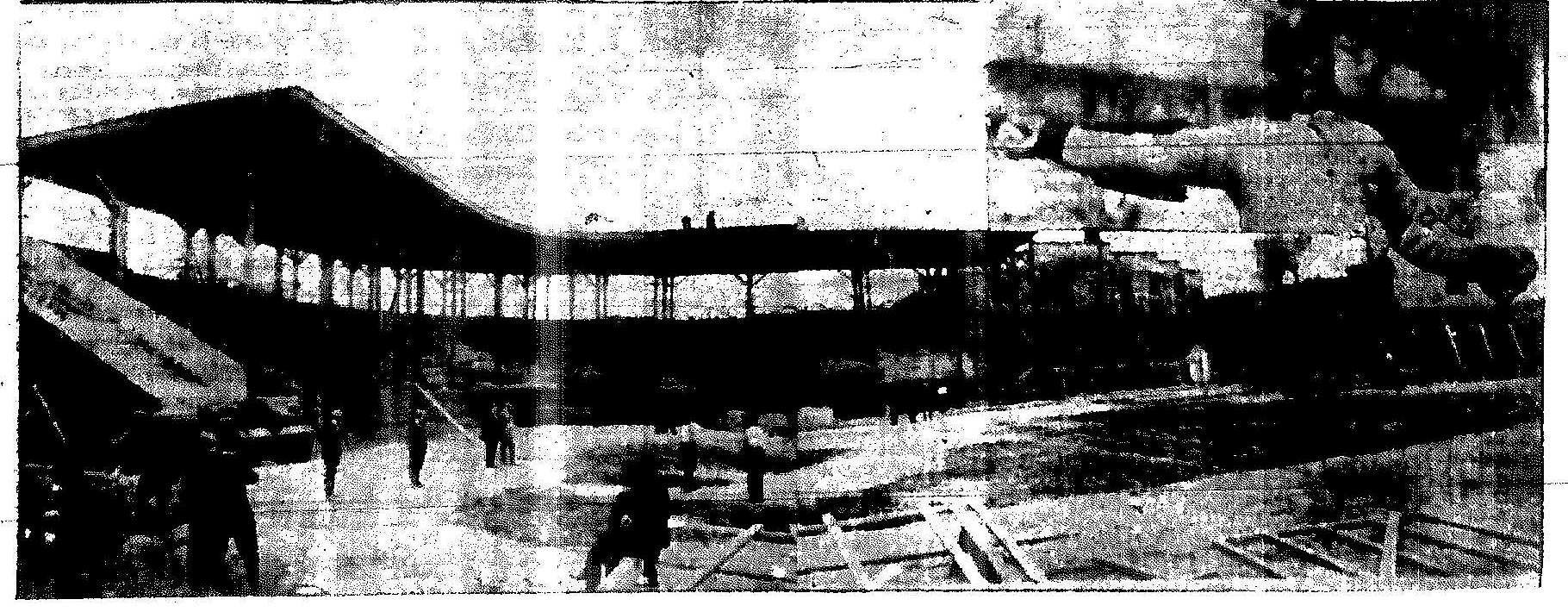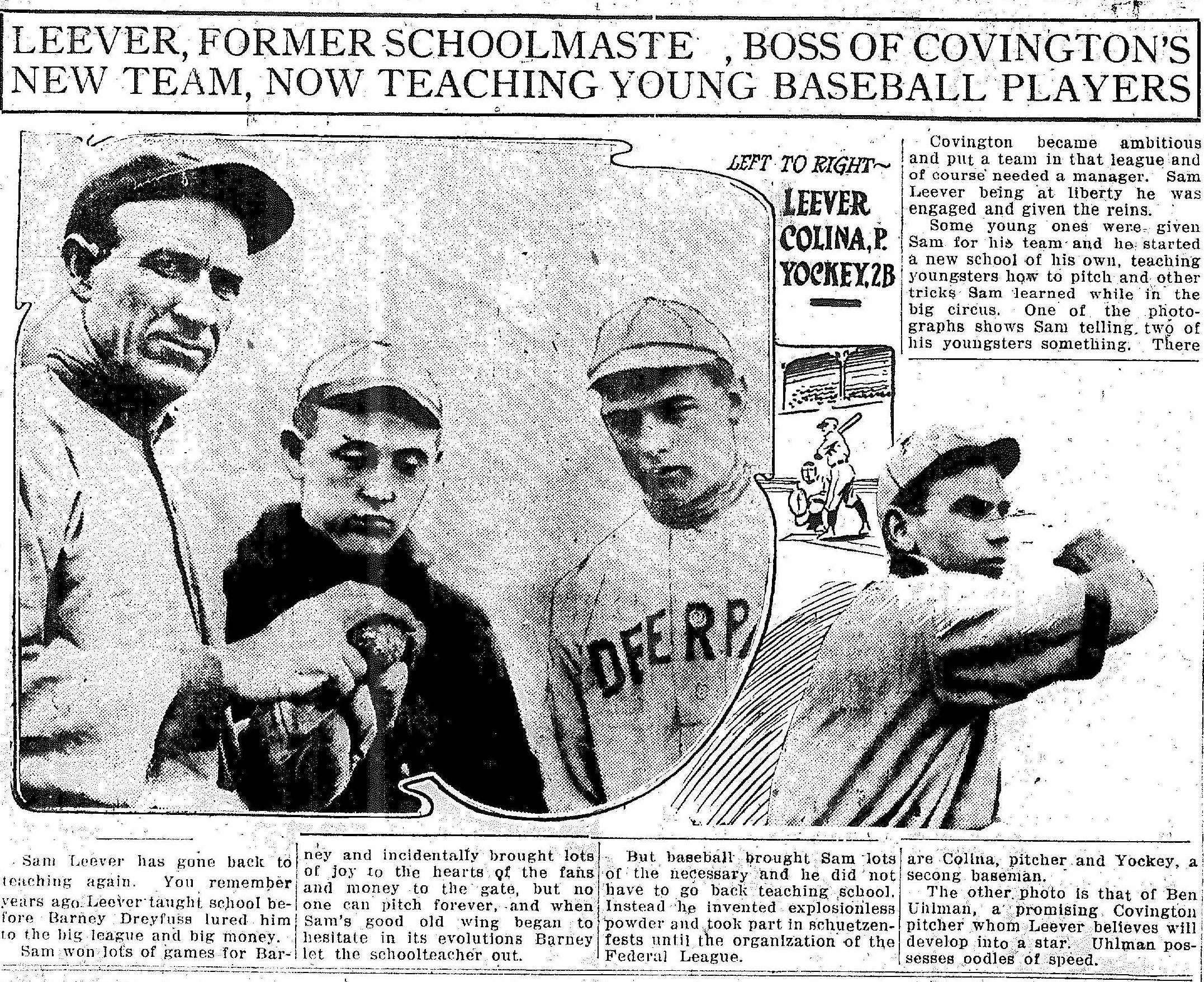
The Blue Sox team on Opening Day, May 9, 1914. Courtesy of the Kentucky County Public Library in Covington.
By Luke Groschen
Special to the NKyTribune
Remember the film Field of Dreams? Kevin Costner’s character built a baseball field in the middle of his corn field because a voice told him to do so.
In 1913 in Covington, Kentucky, baseball enthusiasts and businessmen wanted to bring a professional baseball team to the city. Baseball was viewed as a great advertiser that would put Covington on the map.

Construction of Federal Park began on April 16, 1913. Crews had only weeks to build the park in time for Opening Day on May 9th.
Can you imagine having two different teams to root for, like they have in Chicago and New York? It happened in Cincinnati/Northern Kentucky, but it did not last long.
At the end of the 1912 season, the Blue Grass League lost two teams. The Blue Grass League was a Class D Minor League with teams throughout Kentucky. In order to fill two vacant spots, the organization set its sights on the river towns of Covington and Newport in Northern Kentucky. The Cincinnati Reds, as a major league team (National League), had jurisdiction covering a five-mile radius. That meant that the Reds would have to approve a Blue Grass League team in Northern Kentucky. Garry Herrman of the Reds blocked the request.
Covington almost missed out on bringing a professional baseball club to the city, but a new league called the Federal League was established in Indianapolis and was looking to have a team in Cincinnati or Covington. The Reds had no jurisdiction over this new league, as it was not a member of organized baseball and was viewed as an outlaw league.
After some uncertainty over where in Covington they would build a ball park, the club almost went to Cincinnati instead. Covington was ultimately awarded the franchise by the Federal League when the Cincinnati deal fell through.
The club was named the Covington Blue Sox to memorialize a team that had once played in the city. Club organizers, after incorporating under the Covington Amusement Company, selected a small lot at Second and Scott Streets to build a ballpark. The spot was chosen due to its close proximity to the suspension bridge. Opening Day in Covington was scheduled for May 9, 1913. Construction on the park continued around the clock to complete it in time for the home opener.

Nicknamed the “Schoolmaster,” former Pittsburgh Pirate Sam Leever from Goshen, Ohio, was tapped to lead the Blue Box to the inaugural Federal League Pennant.
The park, by all comparisons, was tiny, with the distance from home plate to right field being 197 feet, 267 to center field, and 218 to left field. Club owners promised a good brand of baseball despite the size of the park. With the park under construction, club owners set out to build their team. The club had several managerial candidates, including the Detroit Tiger great Ty Cobb. Cobb was in the middle of a contract negotiation, and the Covington club promoters tried to bring him here to manage. He did not accept the offer. With Cobb out of the picture, the club hired Sam Leever, who quickly went to work putting together a team of players from all parts of the country.
They held tryouts and practices at Crowe’s Park in Hyde Park in Cincinnati, while the home park was being built. The team played a few exhibition games against a team of assembled professionals, the West Baden Sprudels, an all African-American team, and a team from Kokomo, Indiana. The Blue Sox played in the inaugural Federal League game at Cleveland. The two teams battled through a ten-inning, 6-to-6 tie. The umpire called the game due to darkness.
The Blue Sox held their Opening Day on May 9, 1913. Covington Mayor George “Pat” Phillips had declared a half holiday for the city, with city offices closing at noon. He encouraged businesses to close to support the team. It was a festive day with a parade, bands and decorations across the city. One can only imagine and wonder how it would have stacked up against a modern Reds Opening Day Parade. The dedication ceremonies on the field were just as vibrant as the parade, with the mayor tossing out a golden ball for the ceremonial first pitch. Messenger pigeons were released to spread the news of the opening to each city on the Federal League circuit, as well as to US President Woodrow Wilson.

Ads like this appeared almost daily in the local newspapers. Take not of the announcement of Ladies Day Fridy, one of many promotions the club attempted to attract fans.
In front of a crowd of over 6,000, the Blue Sox shut out the visiting St. Louis team 4-0. It seemed as if the new club was a hit and would be long-lasting. The club would go on to play some decent baseball. Blue Sox second baseman James Emery even smacked an inside-the-park homerun during a game in May. Despite a stint as league leaders, the support for the club never reached the large crowds that Opening Day had brought. The team experienced several rainouts and a lengthy road trip during the month of June that did little to keep the team on the minds of the locals. Rumors began swirling that the club was in trouble and may be forfeited, but were denied adamantly by club officials
The June 19-22 home series against St. Louis would prove to be the final home stand of the Blue Sox. On June 25th, several local newspapers announced that the franchise had been forfeited. The Federal League chose Kansas City to be the new home of the club. Covington club officials cited poor attendance as the principal culprit behind the venture’s failure. By 1914 the Federal League had become a third major league and rivaled the American and National Leagues. Many players from the National and American Leagues joined clubs in the Federal League. The Federal League disbanded at the end of the 1915 season.
If you have any more information about this team that you would like share, including photographs and memorabilia, please contact Luke Groeschen at luke.groeschen@gmail.com.
Baseball enthusiast Luke Groschen was a staff member of the Local History and Genealogy Department at the Kenton County Public Library in Covington when this article was first published at the Kenton County Library website.
























